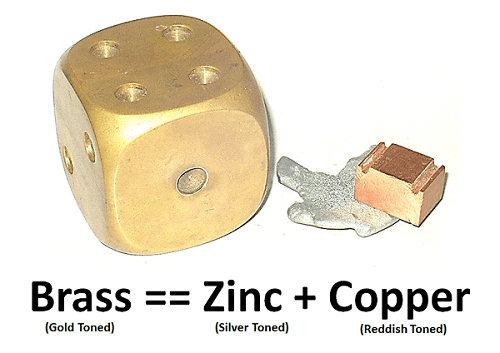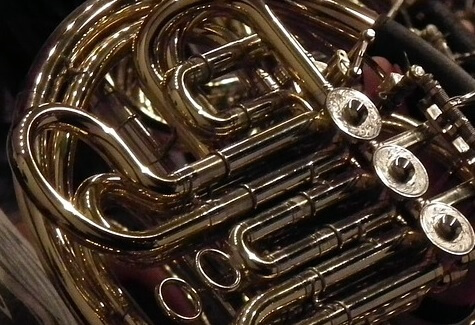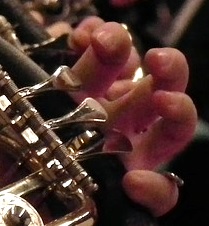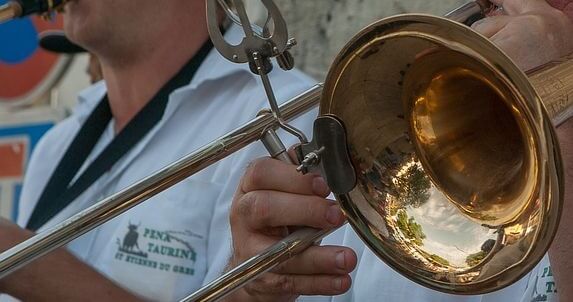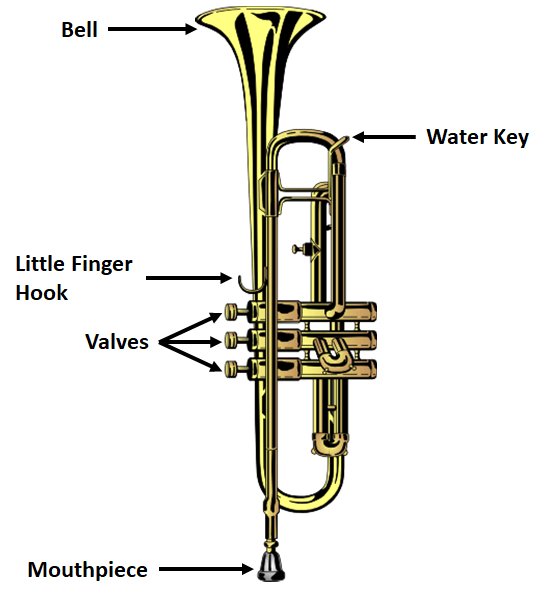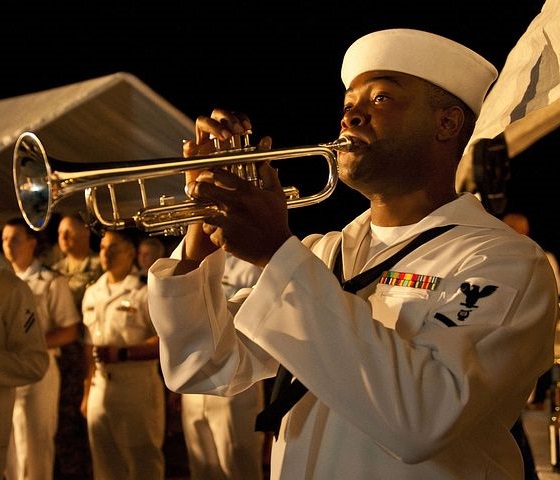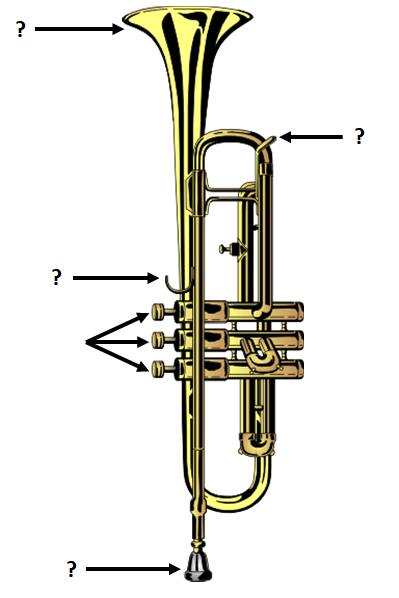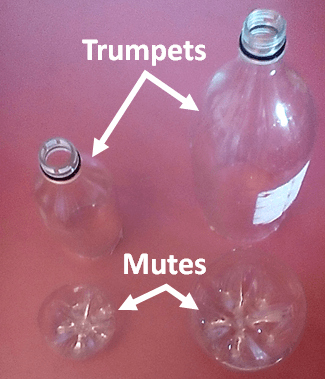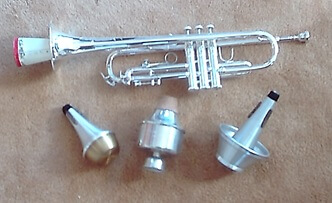Activity 1: Learn the Parts of a Trumpet
- Study the parts on the labeled picture of the trumpet.
Activity 2: Study How to Hold and Play a Trumpet
Examine the picture of the trumpeter and answer the following questions:
- How does the trumpeter use his right hand?
- How does the trumpeter use his left hand?
- What do the trumpeter's fingers press down?
- How does the trumpeter use his mouth and lips?
- How does the trumpeter change which sounds the trumpet plays?
Activity 3: Quiz Yourself: Identify Trumpet Parts
Quiz yourself, and identify the following parts from memory on the trumpet diagram:
- Mouthpiece
- Bell
- Valves
- Water Key
- Little Finger Hook
Activity 4: Can You Find It?
Study the lesson image, 'The Fifth and Sixth Trumpets, Revelation 9:1-12,' by Matthias Gerung, and find the following:
- Haloed God Watching Above
- Blue and Gold Winged Angels with Trumpets
- Star Falling from Heaven
- Opened Bottomless Pit Spewing Smoke
- Angels Smiting Mortals with Swords
- Face in the Smoke of the Bottomless Pit
- Imps Gathered Around the Bottomless Pit
- Flying Horses with Lion's Heads and Serpent's Tails Spewing Disease
- Soldiers of the Angels Riding Flying Horses
- Mortals Hiding in the Hills
Activity 5: Make Your Own Trumpets and Mutes
Materials: 2 Plastic Bottles of Different Sizes and Scissors
Instructions:
- Cut off the bottom third of the first bottle. Keep the bottom third to serve as a 'mute,' as shown in the picture.
- Practice buzzing your lips through the bottle mouth to make a trumpet sound.
- Some musicians use mutes to change the sound of their trumpets.
- Cover the bottom opening of your trumpet with your mute. What happens to the sound?
- Vary the tightness of your lips. What happens to the sound?
- Vary how hard you blow through the opening. What happens to the sound?
- Make a second trumpet with a larger or smaller plastic bottle. Does your second trumpet produce a higher pitch sound or a lower pitch sound than your first?
See in the picture a metal trumpet and a variety of mutes. Note the paper mute placed inside the bell of the trumpet.
 Whimsical Woodwinds and Boisterous Brass
Woodwinds and Brass
Whimsical Woodwinds and Boisterous Brass
Woodwinds and Brass

 Whimsical Woodwinds and Boisterous Brass
Woodwinds and Brass
Whimsical Woodwinds and Boisterous Brass
Woodwinds and Brass

